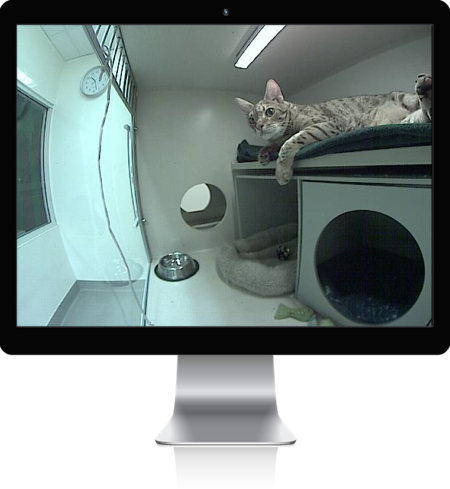
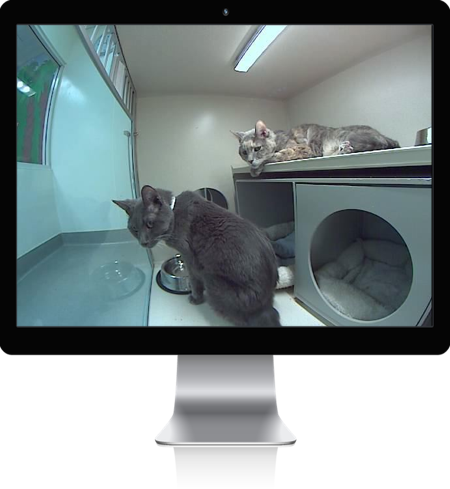
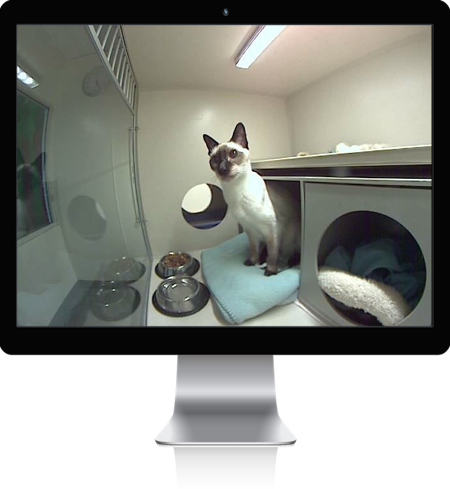
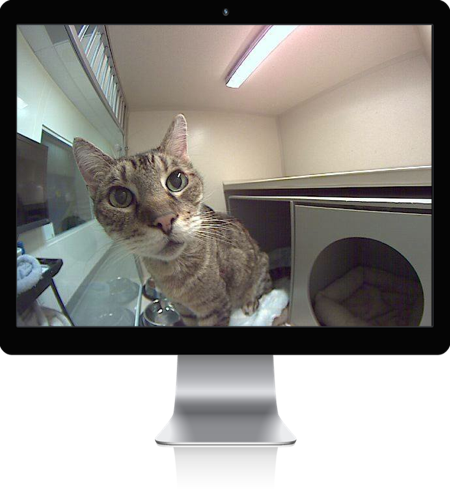


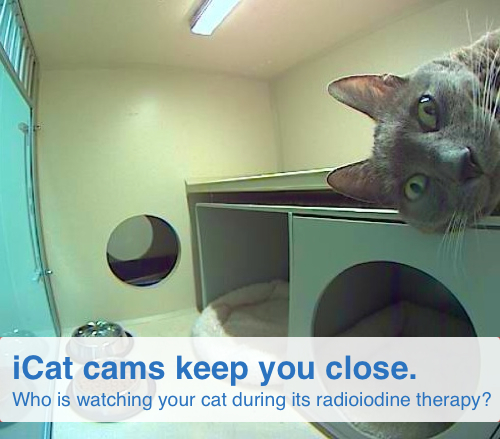
Most hyperthyroid cats are clinically stable when referred for radioiodine therapy. And the radioiodine therapy itself is amazingly non-stressful. As a result, most hyperthyroid cats undergoing radioiodine therapy do not require continuous 24×7 monitoring. The variety of conditions that sometimes occur concurrently in hyperthyroid cats, especially thyroid induced cardiovascular disease, do result in individual cases that warrant a more aggressive monitoring schedule than is usually available for cats undergoing radioiodine therapy. However, the very nature of the isolation required of patients receiving radioiodine therapy makes direct persistent supervision of the patient impossible. Veterinarians and technicians in constant contact with radioactive patients day after day, week after week, year after year, would themselves receive potentially excessive levels of radiation exposure, limiting their ability to perform these duties over time.
Over the years since we began treating hyperthyroid cats with radioiodine, the most common question we encounter is: how and where are the cats housed? In 1999, AVMI opened its doors to a new facility boasting a separate feline radiotherapy ward with large picture windows providing its occupants with a sense of separation from the activities in the rest of the facility while avoiding the claustrophobic conditions usually provided for cats undergoing this therapy. To ensure that the feline patients hospitalized for radioiodine therapy at AVMI enjoy a truly optimal experience, Synder Cat Cottages™ were installed. These spacious individual living quarters boast
- Large, elevated shelves for cats to stretch out on
- Cozy bedrooms for napping
- Hide-a-ways for cats seeking the security of apparent isolation
- A private adjoining bathroom that contains the patient's litter box and is equipped with its own exhaust fan ensuring an odor free environment

